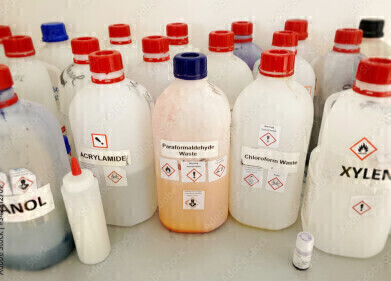Supercritical fluid (SFC), green chromatography
Peak Broadening — Don’t Let Dead Volume Spoil Your Shape
Sep 28 2016
One of the aims of chromatographers everywhere is to get nice sharp Gaussian peaks for each of the components in the run. Peak shape —or rather peak misshape — is a factor in all forms of chromatography and is something that equipment manufacturers and analysts strive to improve as discussed in the article, Peak Distortions in Preparative Supercritical Fluid Chromatography – a More Complete Overview.
Aiming to be in peak shape
The ideal is a Gaussian or symmetrical shaped peak, a narrow peak width at half-height when compared to its height and no peak fronting, tailing or broadening. Poor peak shape can cause integration and resolution errors in your analysis — which ultimately means poor analysis and wasted time and money.
There are many factors that can affect peak shape and these can broadly be split into two areas:
- System or instrument issues including injection technique, good fittings correctly tightened and generally good housekeeping and column cleaning.
- Process or chemistry issues including wrong column type for the analysis and mobile phase factors like pH, buffers or modifiers.
One aspect that can alter peak shape — in this case causing peak broadening — is dead volume. But what is dead volume and where does it arise?
Dead volume — extracolumn volume
International Union of Pure and Applied Chemistry (IUPAC) — the world authority on chemical terminology and nomenclature — used a definition of dead volume as equal to the mobile-phase volume that solutes experience outside of the column, equivalent to the extracolumn volume. Unwrapping this gives a simple meaning that it is the extra volume in a chromatographic system from the injector to the detector other than the active or useful part of a column.
Separation only happens in the column remember — so all other volumes could potentially impact on the quality of the separation, and one of the most common impacts due to dead volume is peak broadening. The main sources of dead volume are the injector, detector flowcell and any connecting tubing in the system. Small amounts of dead volume are unavoidable — but too much will affect efficiency of the system and lead to peak broadening.
Keep an eye on your system
Dead volume can be minimised by taking care when setting up the system — particularly with respect to consumables and column fittings. Remembering to follow manufacturers recommendations when inserting new columns by making sure that the stop depth on any tubing or column is the correct depth for the injector and detector is a simple way to reduce dead volume — and make sure that columns are seated correctly when columns are changed.
Although dead volume is less of an issue for modern components — as resolutions increase it is important to be aware of the system you are using and to keep dead volume to a minimum.
Events
Apr 22 2025 Kintex, South Korea
Analytica Anacon India & IndiaLabExpo
Apr 23 2025 Mumbai, India
Apr 27 2025 Portland, OR, USA
May 11 2025 Vienna, Austria
May 18 2025 Tempe. AZ, USA












